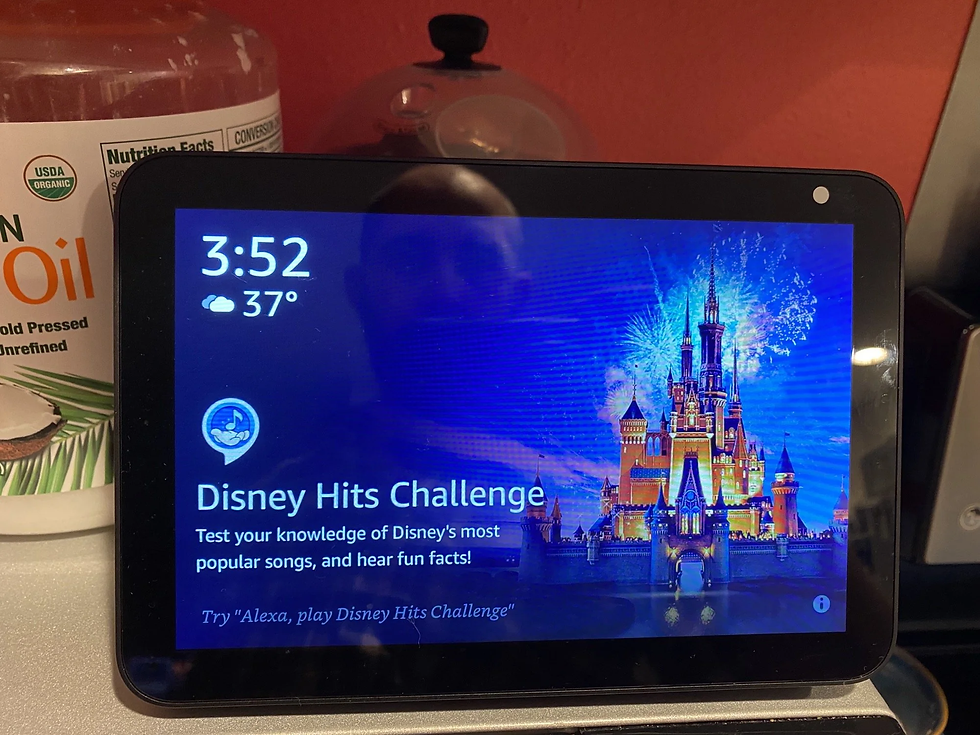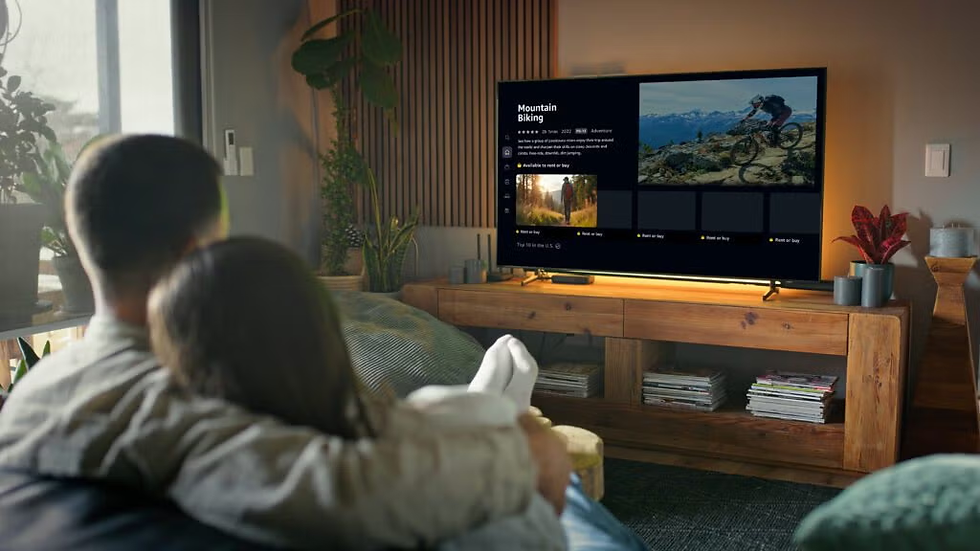Echo Show Ads: The Unwanted Takeover of Smart Displays
- Ethan Carter

- Oct 12
- 7 min read

It started subtly, then became impossible to ignore. You bought an Amazon Echo Show to be a smart photo frame, a kitchen assistant, or a central hub for your home. Now, it feels more like a digital billboard planted in your living room. Full-screen, unsolicited ads for products you have no interest in are interrupting cherished family photos and disrupting the device's core functionality. You're not alone in your frustration. A growing wave of users is reporting that their once-loved smart displays have been hijacked by aggressive advertising, sparking a debate about ownership, user experience, and the future of smart home technology.
This article dives deep into the sudden influx of ads on Amazon's Echo Show devices. We'll analyze the nature of these "sponsored" interruptions, explore the official response from Amazon, and detail the often-ineffective workarounds users are forced to try. More importantly, we'll examine the broader implications of this trend, questioning whether the hardware we purchase is truly ours or just another screen for companies to monetize.
The Unwanted Takeover: How Ads Infiltrated the Echo Show

While advertising isn't entirely new to the Alexa ecosystem, the recent change represents a significant and unwelcome escalation. For years, users have tolerated Alexa's occasional "By the way" verbal suggestions or the Shopping category that could be disabled. However, the recent appearance of full-screen, visually intrusive ads marks a fundamental shift in Amazon's strategy.
This change seems to have gained momentum following a major update to Amazon's Alexa-enabled product line. Led by Amazon's Panos Panay, the redesign was intended to kickstart a journey toward building "products that customers love". Yet, the aggressive ad strategy appears to be achieving the opposite. Users began noticing these full-screen "sponsored" ads appearing on their devices in recent months, leading to widespread dissatisfaction. The rollout of Alexa Plus, the company's premium conversational AI, has also contributed to the clutter by serving its own full-screen promotions. This combination of third-party ads and internal upselling has transformed the Echo Show's interface into a constant stream of commercial content.
The "Sponsored" Experience: A Closer Look at Intrusive Advertising
What makes these new Echo Show ads so disruptive? It's a combination of their format, frequency, and the context in which they appear. Unlike a banner ad on a website, these are full-screen takeovers that completely obscure the device's intended function, whether it's displaying photos, recipes, or news updates. Each ad is clearly marked with a "sponsored" tag, leaving no doubt about its commercial nature.
The user experience is jarring. One moment you're seeing a treasured family photo, the next you're being pitched an herbal supplement or a brand of sports chips. The problem is compounded by their relentless repetition. An ad can appear, be swiped away, only to return a few moments later between the next two photos. This experience feels far more invasive than a verbal suggestion from the voice assistant, which, while sometimes annoying, is at least tied to a recent interaction.
Perhaps the most frustrating aspect for many users is the sense of a "bait and switch". When purchasing the Echo Show, there was no indication on the packaging that it was an ad-supported device. This is a stark contrast to other Amazon products like the Kindle, where customers are explicitly offered a discounted version in exchange for accepting ads on their lock screen. With the Echo Show, users paid full price for a product that was later altered to serve ads, fundamentally changing the value proposition without their consent.
A Chorus of Frustration: Real-World User Reactions

The backlash to this new ad strategy has been swift and vocal. The first signs of trouble emerged months ago when users began sharing images of full-screen ads on their Echo Show 15 devices. In the time since, communities like the Alexa subreddit have become hubs for complaints, with countless users sharing their negative experiences.
The frustration has moved beyond online forums into real-world action. Many users have reported unplugging their Echo Show devices entirely, choosing to sacrifice the functionality rather than endure the constant advertising. Others have taken their complaints directly to Amazon's customer service, with some claiming they successfully received refunds after detailing how the ads ruined the product's usability.
Personal anecdotes highlight the absurdity of the situation. One user described an ad for an herbal supplement appearing between a photo of their daughter at a wedding and a baby picture of their son, an experience they found intrusive and annoying. The ads are often for completely irrelevant products, such as sports chips or tabletop picture frames, making them feel like random, un-targeted spam rather than helpful suggestions. This widespread user sentiment directly contradicts the company's stated mission to create products customers will love.
Can You Fight Back? Actionable Steps and Limited Solutions
Faced with growing user anger, what are the official and unofficial ways to deal with Echo Show ads? Unfortunately, the options are limited and largely ineffective.
When asked if the ads could be disabled, an Amazon spokesperson stated that advertising is a "small part of the experience" and helps customers discover new content. The official recommendation is to swipe away an unwanted ad or provide feedback by tapping the information icon on the screen. However, user experience shows this is a temporary fix at best. Providing feedback that an ad is "irrelevant" may trigger a message saying the ad has been "paused," but it does not prevent another ad from appearing moments later. There is currently no setting to permanently opt-out of this new form of advertising.
In response, a resourceful community of users has discovered several workarounds, though each comes with significant compromises. Some have found success by switching their device's language settings to Canadian English, as the full-screen ad program has not yet rolled out in Canada. Another popular method is to enable Kids Mode, which restricts the content shown on the screen. While these tricks might remove the ads, they also hobble the device's core functionality. Ultimately, if you have to cripple a product to make it usable, it raises the question of why one should use it at all.
The Bigger Picture: What This Means for the Future of Smart Homes

The Echo Show ad controversy is more than just an annoyance; it's a symptom of a larger, more troubling trend in the consumer electronics and smart home industry. Amazon's leadership has attempted to reframe these ads. Panos Panay suggested that if an ad is relevant, it's not an ad but an "add-on" that can help a customer find what they are looking for faster. He did concede, however, that the "randomness" of the current ad experience is not ideal and that the goal should be to "elegantly" elevate useful information.
Despite this vision, the reality for users is an experience that feels neither elegant nor helpful. By pushing intrusive ads onto a device that customers have already paid for, Amazon risks eroding user trust. This move sets a dangerous precedent, suggesting that any internet-connected device, regardless of its initial purpose, can be retroactively turned into a platform for advertising.
This issue highlights the precarious state of the current smart home landscape, which often feels like a "collection of compromises". Amazon has a powerful voice assistant but seems determined to monetize every interaction. Google's commitment to its smart home division feels inconsistent, and Apple Home, while offering a better experience, is expensive and locked into a closed ecosystem with a less capable assistant. While advanced DIY solutions like Home Assistant exist, they require a level of technical effort most consumers are unwilling to invest.
With the arrival of more powerful AI like Alexa Plus, the dream of a truly ambient and helpful smart home is closer than ever. However, for that dream to be realized, companies like Amazon must prioritize delivering real, long-term value over short-term ad revenue. It's time to stop trying to sell out their user base and focus on building the trustworthy products customers were promised.
Conclusion and FAQ

The Amazon Echo Show, once a promising centerpiece of the smart home, is currently suffering from a crisis of identity. By prioritizing ad revenue through intrusive, full-screen "sponsored" content, Amazon has degraded the user experience and betrayed the trust of customers who paid for a product, not a billboard. While the company frames ads as a discovery tool, the reality is a jarring and relentless stream of irrelevant promotions that disrupt the device's primary functions. With no effective way to opt-out and workarounds that cripple the device, users are left feeling powerless. This situation serves as a critical warning for the entire smart home industry: customer trust, once lost, is incredibly difficult to win back. The future of the ambient home depends on delivering genuine value, not just finding new screens to sell.
Frequently Asked Questions (FAQ)
1. What are Echo Show ads?
Echo Show ads are full-screen, "sponsored" content that have begun appearing on Amazon's smart displays. They interrupt the normal user interface, such as photo slideshows or content cards, to display advertisements for various products and services.
2. Why are users so frustrated with these ads?
The primary frustration stems from the ads being intrusive, repetitive, and often irrelevant. Many users feel it constitutes a "bait and switch," as the device was not advertised as an ad-supported product at the time of purchase, unlike other Amazon hardware like ad-supported Kindles.
3. How does Amazon's ad strategy compare to its competitors?
The article suggests the smart home market is full of compromises. While Amazon's approach is becoming aggressively focused on monetization, Google's commitment to its smart home division is perceived as inconsistent, and Apple's premium, ad-free experience is criticized for being an expensive, closed ecosystem with a less capable voice assistant.
4. Can I turn off the ads on my Echo Show?
Currently, there is no official setting to permanently disable these new full-screen ads. Amazon's recommendation is to swipe them away or provide feedback, but users report this is only a temporary solution. Some users have resorted to unofficial workarounds like changing the device's language or enabling Kids Mode, but these methods can limit the device's functionality.
5. What might this trend mean for the future of smart devices?
This strategy signals a potential future where manufacturers increasingly push ads to hardware that customers have already purchased. It erodes the concept of product ownership and could damage consumer trust, pushing users toward platforms that prioritize privacy and an ad-free experience, or forcing them to accept that their devices are also ad-delivery vehicles.
